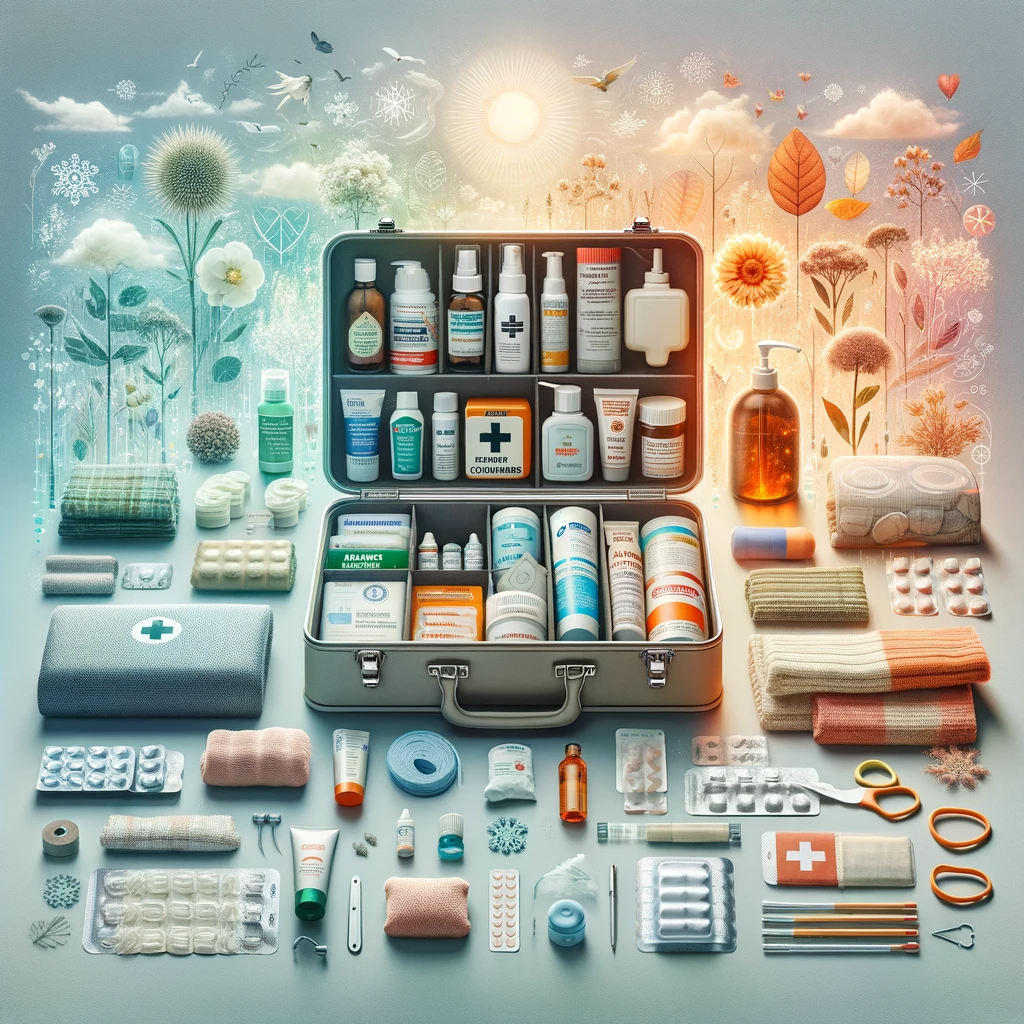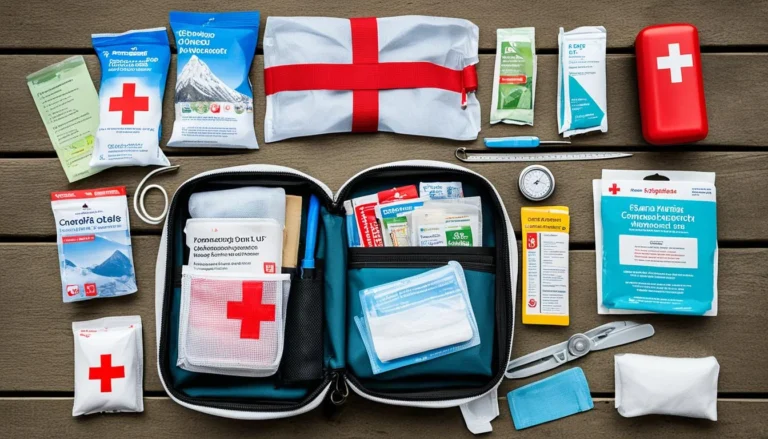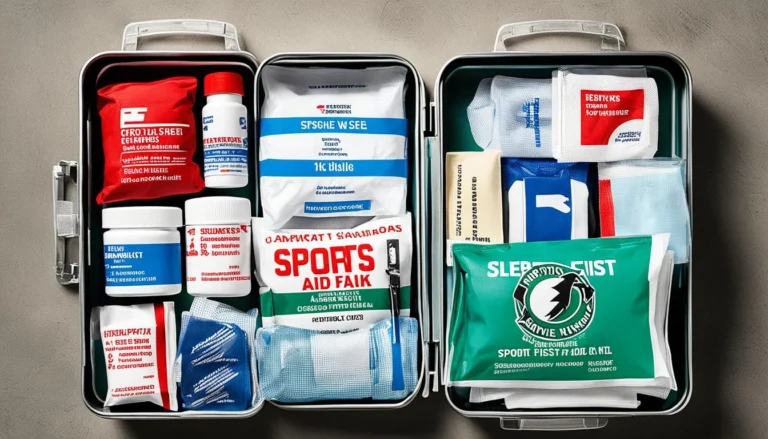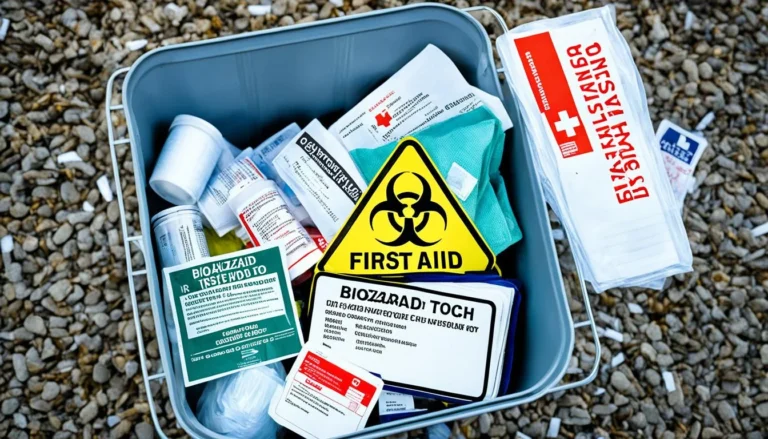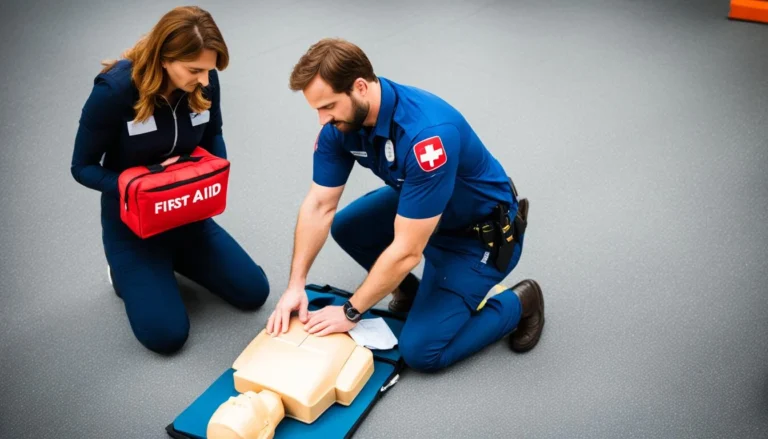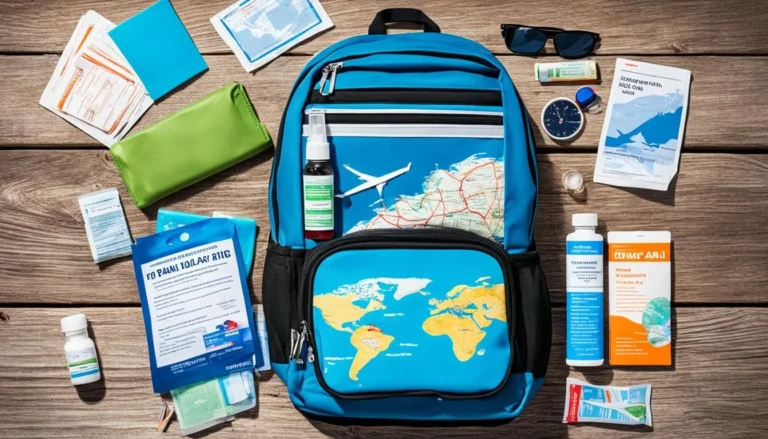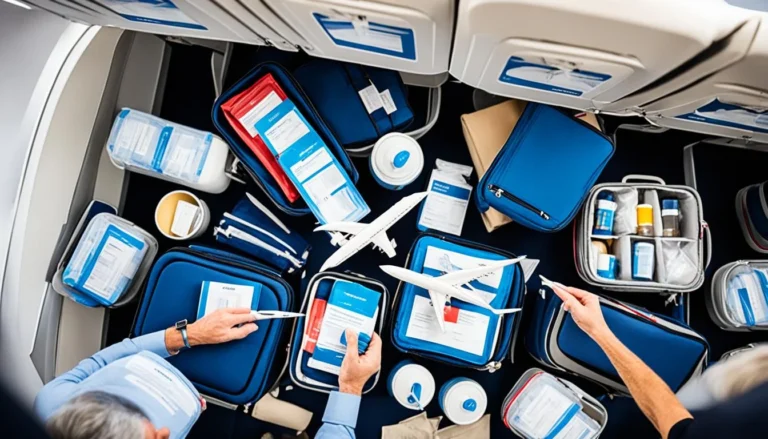Refilling Tips: How Often Should A First Aid Kit Be Refilled?
Did you know that 58% of British homes don’t check their first aid kits often? This is important for staying ready for any emergency. Having your kit ready is key for safety. It helps us be prepared for sudden accidents.
It’s vital to keep your first aid kit up-to-date. This means adding what your family might need, like extra plasters. Checking your kit every six months is a good idea. This helps you be ready for any emergency.
Key Takeaways
- Maintain your first aid kit as part of regular health management practices.
- Personalisation of kits can enhance emergency preparedness for a unique family or individual needs.
- Adopt a six-monthly review process to ensure the safety and efficacy of your first aid supplies.
- Be mindful of expiration dates, as expired items can compromise emergency response effectiveness.
- Refilling first aid kits instead of buying new ones can be both cost-effective and sustainable, aligning with responsible safety tips.
The Economic and Personal Benefits of Refilling Your First Aid Kit
Refilling your first aid kit is smart and good for the planet. You only replace what you need. This way, you take care of your health and the earth.
Make your kit fit your family’s needs. It can help with long-term conditions, keep children safe, or get ready for outdoor fun. A kit made just for you means you’re always ready.
By refilling, you create less waste. You throw away fewer plastic containers. You’re not just saving money; you’re helping the earth. And you keep your loved ones safe.
- Cost savings on medical supplies
- Reduced environmental impact through smart resource use
- Enhanced readiness for a range of health and safety needs
| Benefits of Refilling | Impacts on Healthcare & Environment |
|---|---|
| Economical resource allocation | Less financial burden on families |
| Customisable kit contents | Targeted and efficient healthcare |
| Environmental stewardship | Contribution to sustainable living practices |
Keeping your kit full is a wise use of resources. It shows we care about affordable healthcare, custom safety, and the earth. Next time you refill your kit, think of the big picture. Embrace cutting down waste.
How Often Should A First Aid Kit Be Refilled
Checking and keeping your first aid kit ready is key. It is part of being prepared and safe all year. A kit that has what it needs is crucial for health and emergencies. Think about several important things to make sure your kit works well and is trustworthy.
Checking Expiry Dates: Ensuring Effectiveness and Safety
At the centre of a good first aid kit is watching the expiry dates. Stuff like medicines can get less effective over time. It’s important to check every six months. This makes sure everything in the kit is safe and works. This helps you keep everyone healthy, whether at home or work.
Frequency of Use: Tailoring the Refill Schedule to Your Needs
If you use your first aid kit a lot, you’ll need a special plan. Places like homes, schools, or places for outdoor fun need this. You have to replace things like band-aids and wipes more often. This makes sure that you can always help in the best way. It’s about making sure care is right for each situation.
Seasonal Checks: Preparing for Different Times of Year
Changing your kit with the seasons is smart. Add things like allergy pills in spring or warm blankets in winter. This way, you’re always ready, no matter the season. It shows you’re thinking ahead to stay safe and respond to emergencies.
Here is a table that shows how to change your kit with the seasons:
| Season | Key Additions | Usage Considerations |
|---|---|---|
| Spring | Antihistamines, insect sting relief | Increase in outdoor activities leads to more frequent replenishment needs |
| Summer | Sunburn relief, oral rehydration salts | High temperatures call for additional hydration and sun protection elements |
| Autumn | Hand warmers, light sticks | Prepare for shorter days with increased visibility and warmth resources |
| Winter | Thermal blankets, traction aids for slips and falls | Cold weather warrants extra care against hypothermia and accidents on ice |
By keeping an eye on expiry dates, planning for use, and changing with the seasons, you make sure your first aid is always ready. This careful planning shows you value health and being prepared. Doing these steps means you are ready to handle emergencies at any time of year.
Customising Your First Aid Kit: What to Include Based on Your Environment
Having a first aid kit ready is key for home healthcare and workplace safety. It should fit the place it’s in, like home or work. This means choosing the right stuff is important. It helps keep your family, co-workers, and others safe.
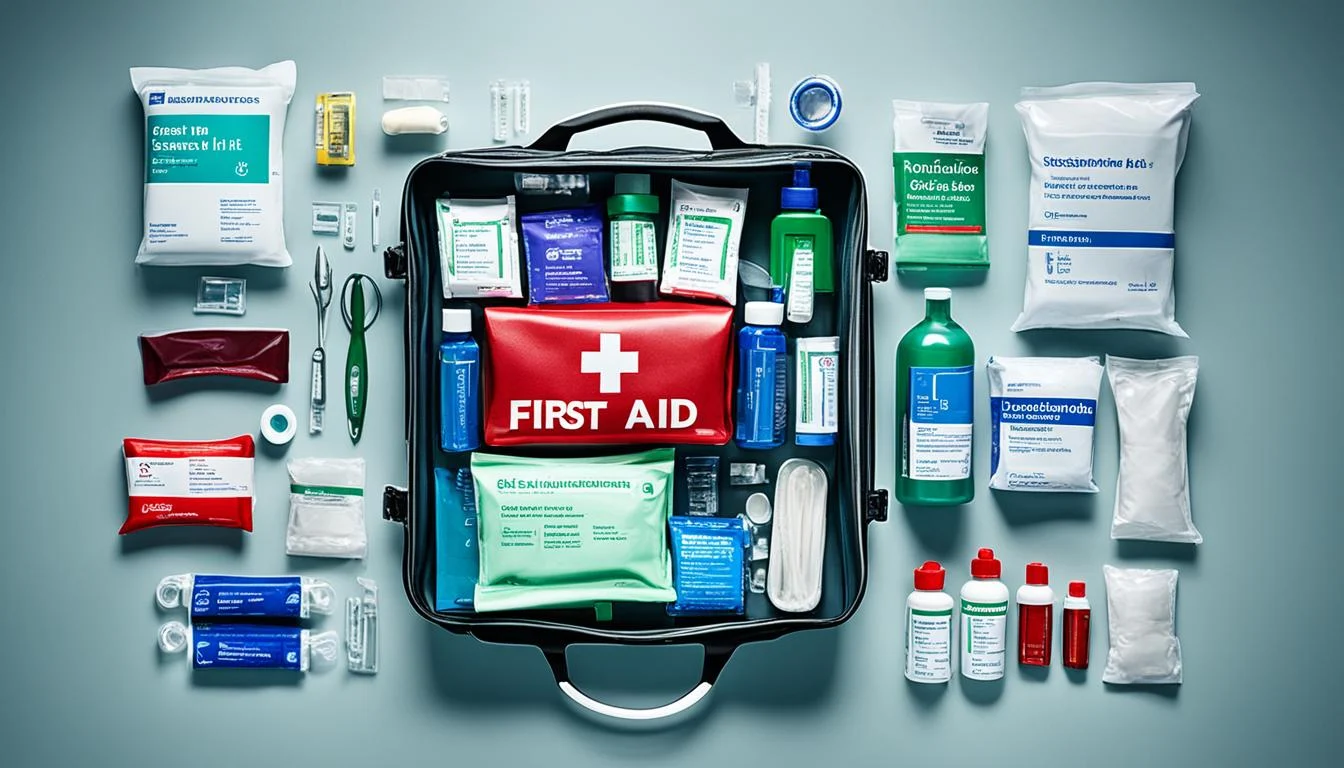
Essentials for Home and Workplace Kits
A first aid kit is vital at home or work. It helps a lot in small accidents or health troubles. You need things like plasters, cleaning liquids, and painkillers. Adding special items can make the kit even better for emergencies.
Special Considerations for Cars, Schools, and Outdoor Settings
Vehicular safety kits are important for drivers. They help a lot if there’s a car trouble. For schools, kits need to fix usual kid accidents and big emergencies too. And, people going outside need outdoor first aid essentials. Things for bites and bad weather are very helpful.
Choosing the Right Refill Packs and Products
It’s easy to forget about first aid product selection and refill packages. But, refilling your kit doesn’t have just one way to do it. Different uses mean different refills. Good suppliers have many options for all kinds of situations.
High-quality emergency items can stop a small problem from getting worse. So, always fill your kits with the best. This keeps everyone safe and ready for anything.
Conclusion
Being ready for emergencies is more than just ticking a box. It’s about keeping safe and prepared always. Keeping a first aid kit up to date is as crucial as any safety effort. By checking and refilling it often, we stay ahead in health care.
First aid kit management changes as our lives do. By picking the right items and personalizing refills, our safety net meets our needs. This shows we value safety and understand emergencies can vary by situation.
A well-maintained first aid kit is key to being prepared. With regular care, we lay a strong foundation for emergency readiness. Choosing sustainable practices for refills also shows we care for the environment, not just our health and safety.

